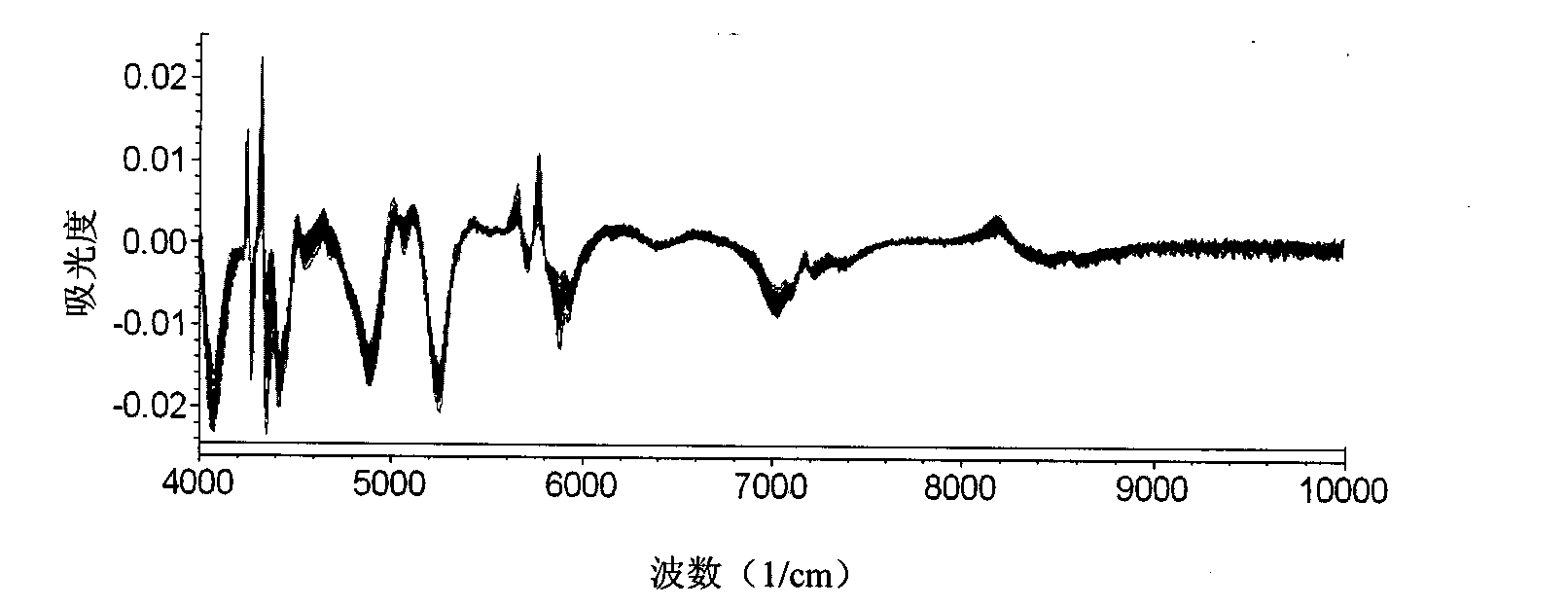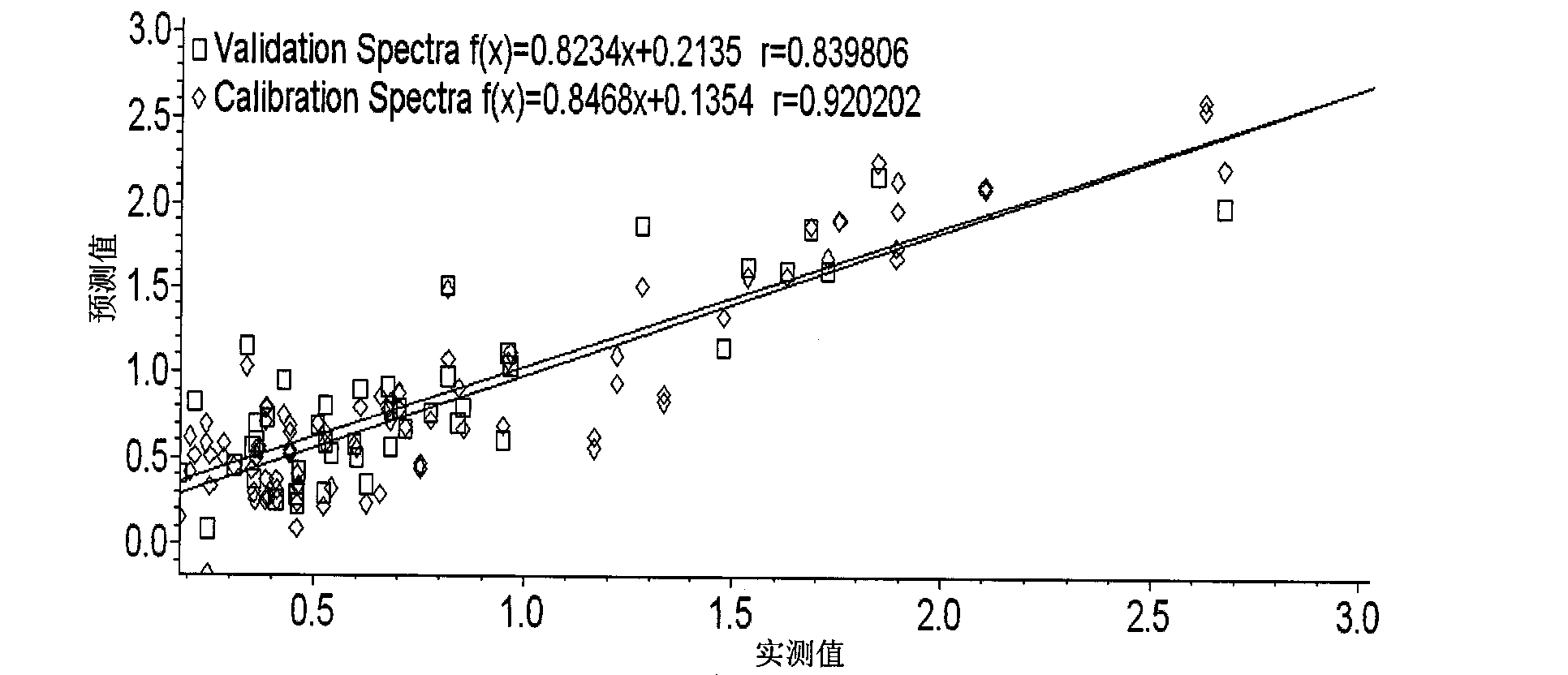Method for quantitatively detecting dihydrocapsaicin
A quantitative detection method, the technology of dihydrocapsaicin, applied in the field of analytical chemistry, can solve the problems of high price, complicated experimental operation, time-consuming and laborious, etc., and achieve the effect of saving manpower and material resources, strong penetration ability and good precision
- Summary
- Abstract
- Description
- Claims
- Application Information
AI Technical Summary
Problems solved by technology
Method used
Image
Examples
Embodiment
[0013] 1 Materials and methods
[0014] 1.1 Materials
[0015] 128 mature pepper samples from the Chinese Academy of Agricultural Sciences. Among them, 93 samples are calibration set and 35 samples are validation set. The content of dihydrocapsaicin is 0.181mg / g~3.355mg / g.
[0016] 1.2 Instruments and equipment
[0017] NIRLab N-200 near-infrared quality analyzer, Switzerland Buchi company (NIRCalV4.21 software, 12cm sample cup).
[0018] 1.3 Method
[0019] 1.3.1 Sample pretreatment
[0020] Crush the dried chili sample with seeds and skin, pass through a 40-mesh sieve, and spread the chili powder all over the sample cup, with a thickness of not less than 1cm.
[0021] 1.3.2 Near-infrared spectrum acquisition
[0022] At room temperature, the near-infrared diffuse reflectance spectra of pepper powder samples were measured. When measuring, the resolution is 1cm -1 , the number of scans is 3, and the spectral range is 1100-2500nm. After the instrument is preheated for...
PUM
 Login to View More
Login to View More Abstract
Description
Claims
Application Information
 Login to View More
Login to View More - R&D
- Intellectual Property
- Life Sciences
- Materials
- Tech Scout
- Unparalleled Data Quality
- Higher Quality Content
- 60% Fewer Hallucinations
Browse by: Latest US Patents, China's latest patents, Technical Efficacy Thesaurus, Application Domain, Technology Topic, Popular Technical Reports.
© 2025 PatSnap. All rights reserved.Legal|Privacy policy|Modern Slavery Act Transparency Statement|Sitemap|About US| Contact US: help@patsnap.com



